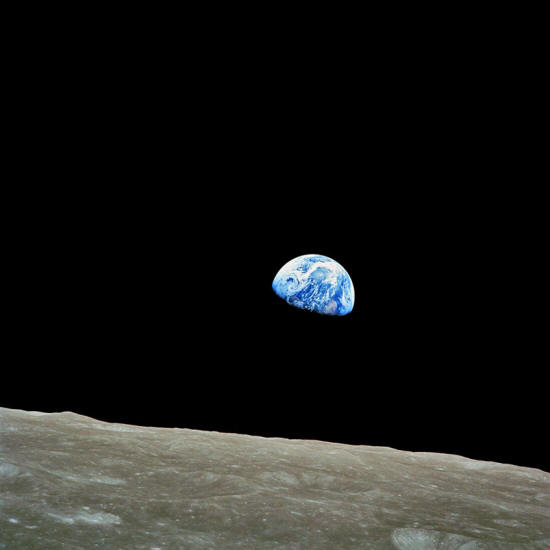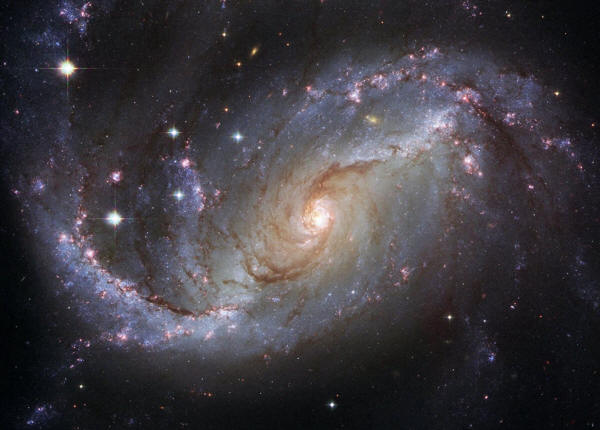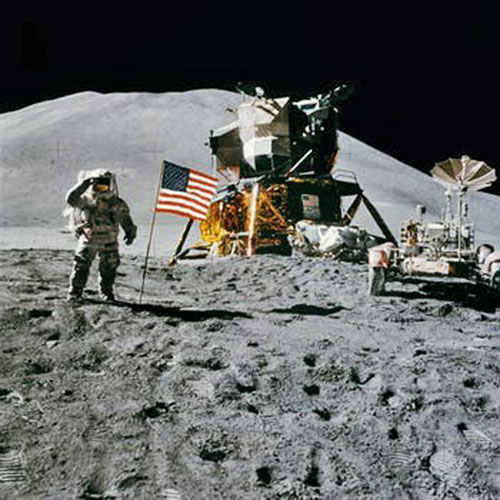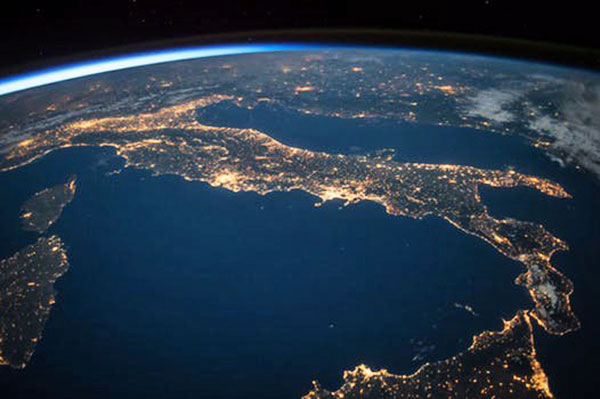|
by Tony Deller
as big as ours appears to be, is there a chance we are the 'only' advanced intelligent species alive at this time?
No matter how scientists slice it, our planet is special. And this isn't the anthropocentrist in me making a statement. The Earth settled into just the right orbit, and had just the right combination of elements, and just happened to avoid collisions large enough to completely shatter it.
We are surely one of the
luckiest planets in the galaxy... And for billions of years, life has been exploding and blooming all over our beautiful, wet, warm world, taking countless forms in every effort to find just the right ones that might be able to thrive for millions, even billions, of years.
We've been sending radio signals and other emissions into space for over a century, and actively looking for signals from other nearby places for decades, and there still hasn't been a visit from a spacefaring civilization or a message we could say came from another advanced intellect.
There are a few serious problems that are hampering this...
Distance
Our Milky Way is roughly 100,000 light years across. The universe, as we have observed so far, is at a minimum roughly 91 BILLION light-years in diameter.
It is bigger, but it's so big we just can't see yet.
That's just to cross it
in a straight line. Covering the actual volume of space enclosed by
the Milky Way in our fictional "U.S.S. Enterprise" would require
hundreds of millions of years.
This question has come in
many forms, but most recently we've narrowed it down with more data
as our technology has progressed.
It's the needle in a
haystack problem applied to a haystack of nearly infinite
proportions.
Photo by Jeff Golenski
Unsplash
Human Time - The
first problem
10… million… observable…
So the size of space is insane, but we're talking about time now. And, it turns out, even though size is a serious obstacle, we can handle size as long as we have the time to do so.
Time is our limiting factor. If we can surpass light speed, maybe via the Alcubierre Warp Drive or utilizing worm holes or some other as-yet-unthought of possibility, then we only need the TIME to explore the universe...
Of course, to get to the point that our technology needs to be in order to even be able to consider covering galactic and intergalactic distances, humanity will likely need to survive centuries longer than we already have.
This means overcoming our inherent tendency to do things that threaten our own existence as well as all other life on Earth, and also avoiding natural and cosmic catastrophes that could cause our extinction, or send us back to a pre-industrial level.
But the amount of time we, personally, have as a species is only one side to the role time plays in our situation.
Cosmic Time - The second problem
Above, I've written about time as it affects us, humanity, in our own struggles.
We must last long enough to have a chance to further explore the universe. But the scale of time since the 'Big Bang,' the birth of our (current?) universe, is a different issue altogether.
The late Dr. Stephen Hawking has calculated that time began some 15 billion years ago, when a singularity of infinite density began expanding, creating time and space and we know it.
It took life on Earth (very) roughly 4 billion years to develop anatomically modern humans, and it took humans 200,000 years to reach the stage we're currently enjoying, sending all sorts of signals radiating out into the Cosmos along with tons and tons of beautiful space debris like Pioneer and Voyager.
And that most recent stage, during which we've been able to be heard across interstellar space and been able to possibly hear signs of other advanced civilizations, has only covered the past hundred-odd years, since Marconi sent the first radio signal in 1895.
Even though life has been around for quite a long time on Earth, no one else would have been able to find out about it until what is essentially RIGHT NOW, a very short segment in a very, very long timeline.
We could be the "only" intelligent, sentient, technological species living in the Milky Way right now.
In fact, the odds of just that are probably well over 90% because of the tremendous spans of time involved.
The Kardashev Scale
In 1964, Russian astrophysicist Nikolai Kardashev, who had been searching for evidence of potential intelligence in cosmic signals, devised a scale by which we might measure the levels of technological advancement such civilizations might display.
This came to be known as, rightly, the Kardashev Scale, and it breaks technological civilizations down into 3 main groups, based on how much energy the society has access to use:
Since 1964, some astronomers have added Type IV (1046W) and Type V (basically infinite energy access).
It is important to understand where the scale officially begins, with Type I:
It could take a couple of centuries for us to get close to being a Type I.
If going from Type 0 to Type I takes a civilization roughly 500 years (starting with the beginnings of our industrial use of fossil fuels), then the growth from Type I to Type II might take another 1000 years, and from Type II to Type III, another several thousand years would be expected before any appreciable amount of galactic colonization might be occurring.
Time versus the Kardashev Scale
Humanity needs to avoid or prevent its extinction for thousands of years to go from an Earthbound technological level to a truly spacefaring level.
Only then will we be close to "extinction-proof" (minus the inevitable heat-death of the universe).
So, we could say that just about any alien civilization of comparable intelligence might have a window of opportunity similar to ours, 5,000 years, in which to kick-start technological advancement and build it up all the way to colonizing worlds around stars other than their own. 5,000 is one three-millionth of the time that the universe had been around so far (15 billion years).
Charles Chu writes about the many technological leaps that humanity could have made long before we actually did in this article.
It's a very interesting topic, and offers some insight into this next thought:
For some other civilization, it might only be a 2,000-year investment. For another, it could take 10,000 years.
In all the billions of years that have come before our little 5,000-year window,
Because of the sheer length of the universal timeline, even if there have been thousands of other intelligent species that reached the window, the odds that any of them are currently, right now, overlapping with us are slim.
We won't find Type 0, or Type I, or even Type II civilizations. What we would find is Type III (or higher).
Why? Because a civilization must first survive through their window of opportunity, all the way to the point where they open it and fly out to colonize the endless stars beyond.
Only then would they be at a level of technology that could allow for interstellar travel at speeds that make exploring our massive haystack of a galaxy for other needles like, or nearly like, themselves.
In Dr. Hawking's 2016 documentary "Favorite Places", the preeminent astrophysicist again stated a thought of his that,
It's most likely that whenever we do encounter intelligent aliens, they will be at least a level higher than us on the Kardashev Scale.
And, given that once we make it through our own window of opportunity we might be assured humanity can exist for many thousands, if not millions of years longer, it may be inevitable that we DO meet another intelligence despite the vastness of time and space...
Earth is likely not the only world that harbors life. We are probably not the only intelligent, technological species.
But we could be one of the earliest, or one of the last...
|






